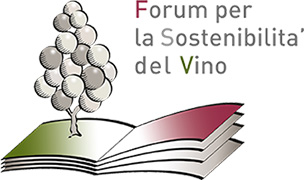We offer in this section an abstract of the chapter “Business Models and Sustainability: an analysis of value creation in Italian wineries” of the First Report on Wine Sustainability (which will be presented in New York November 10th 2014), by Lorenzo Zanni* and Tommaso Pucci**, based on a cognitive investigation made over more than 1000 italian wineries.
The investigation conducted by the Department of Business and Law of Siena University in cooperation with Gambero Rosso and Forum for the Sustainability of Wine, intend to answer to three main research questions:
- Which components of a business model does an orientation towards “sustainability” affect most? Or rather, how pervasive is the concept of “sustainability” within the business model of a winery?
- Are there different levels of orientation towards “sustainability”?
- Is there a relationship between orientation towards “sustainability” and firm performance?
This study is based on data collected by the authors in collaboration with Gambero Rosso and the Forum for Wine Environmental Sustainability, between September and December 2013. The data was collected via an online questionnaire sent to a “convenience” sample of 4,787 Italian wine companies registered with Gambero Rosso. A semi-structured questionnaire was used, composed of a total of 15 questions subdivided into 4 sections regarding: a) structural data and firm performance; b) strategy, c) organization; d) technology. The questionnaire was validated in advance by a panel of experts designated by the Forum for Wine Environmental Sustainability: Marco Caprai, Antonio Ferro, Michele Manelli and Marco Sabellico. The final response rate was 21.58%, with 1033 questionnaires collected, of which 828 (17.30%) were complete.
In summary the main points for reflection that emerged during the field research are:
1. The concept of “sustainability” is now well-rooted in the world of Italian wine, with good average values for all the indicators examined, demonstrating that the sector is gaining awareness in this sense.
2. As a consequence, all the components considered in the business models of Italian wineries (related to the three sub-systems of strategy, organization, technology) are now thoroughly permeated by sustainability.
3. The high average value of the various indicators does not, however, imply perfect uniformity in terms of structural characteristics and entrepreneurial behavior within the study population. In fact, 3 groups of firms with different approaches to sustainability can be identified within the sample examined; these strategic groups are associated with different threshold levels in the achievement of indicators of sustainability.
4. The different degree of influence of sustainability on the different components of the business model follows the same pattern, albeit with different levels of intensity in the three groups identified.
5. The variable of size appears to be a factor that favors a generally more structured approach to sustainability; this seems to be in line with observations in other “Made in Italy” sectors, where firm size is a determining factor in explaining the business models implemented (cfr. Pucci, Rabino and Zanni, 2013). Nonetheless, this does not prevent many micro-wineries from implementing strongly sustainability-oriented behaviors.
6. Sustainability seems to have a positive impact on performance, as self-evaluated by the entrepreneurs interviewed; the best business performance does not seem to be associated with individual indicators of sustainability, but rather with groups of actions undertaken, which gain strength from each other.
7. The variables identified as drivers of value creation are all relevant, although some are apparently more widely accepted. In particular, drivers related to territorial variables seem to have more force than those related to technology and energy, as well as more marked intensity, probably because they are deeply rooted in the history and economic and social behavior of the sector in Italy. At first glance this may appear to be a distinctive feature of the world of wine in Italy, compared to other national models.
8. “Sustainability” seems to act as a driver of value in relation to strategies of both product differentiation and cost reduction; on the strategic level pro-sustainability actions seem to follow parallel paths, which mutually support each other.
9. With reference to the firms studied, further margins of improvement towards sustainability are visible, especially regarding their ability to create “networks” concerning certain fundamental aspects, such as: supply chain relations, technology transfer and knowledge management. As observed in the literature and through other countries’ experiences, sustainability-related actions can be more effective when a “systemic” capacity for action is created and when a “collective strategy” in favor of sustainability emerges in relation to individual aspects.
* Department of Business and Law – University of Siena, Piazza S. Francesco 7, 53100 Siena, tel. 0577.232607, lorenzo.zanni@unisi.it
** Department of Business and Law – University of Siena, Piazza S. Francesco 7, 53100 Siena, tel. 0577.232659, pucci14@unisi.it


